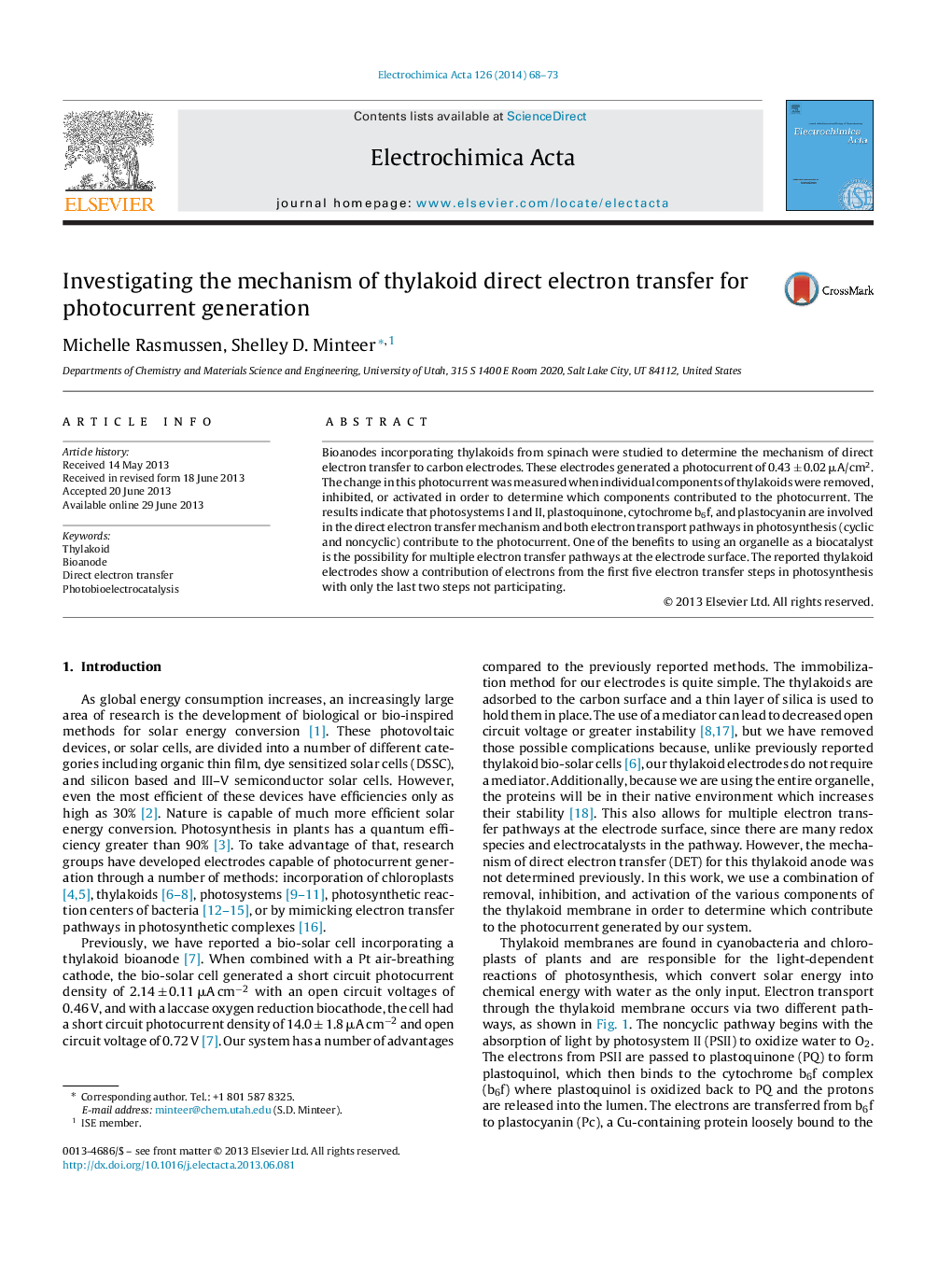| Article ID | Journal | Published Year | Pages | File Type |
|---|---|---|---|---|
| 186371 | Electrochimica Acta | 2014 | 6 Pages |
Bioanodes incorporating thylakoids from spinach were studied to determine the mechanism of direct electron transfer to carbon electrodes. These electrodes generated a photocurrent of 0.43 ± 0.02 μA/cm2. The change in this photocurrent was measured when individual components of thylakoids were removed, inhibited, or activated in order to determine which components contributed to the photocurrent. The results indicate that photosystems I and II, plastoquinone, cytochrome b6f, and plastocyanin are involved in the direct electron transfer mechanism and both electron transport pathways in photosynthesis (cyclic and noncyclic) contribute to the photocurrent. One of the benefits to using an organelle as a biocatalyst is the possibility for multiple electron transfer pathways at the electrode surface. The reported thylakoid electrodes show a contribution of electrons from the first five electron transfer steps in photosynthesis with only the last two steps not participating.
